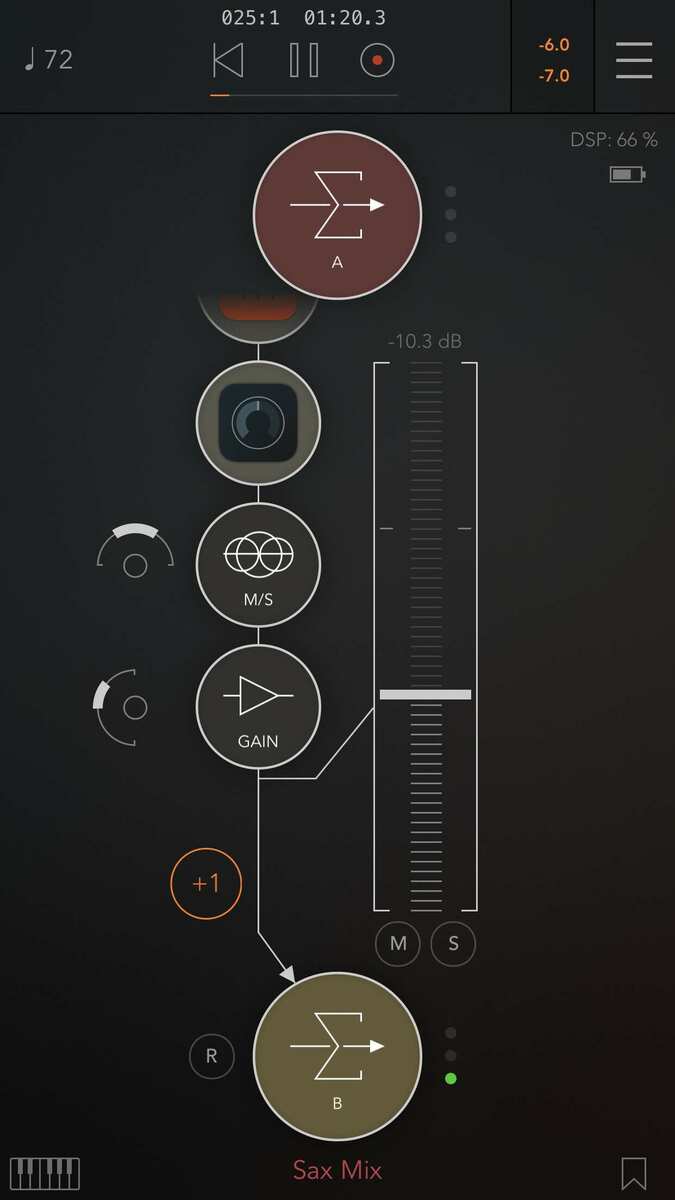Loopy Pro: Create music, your way.
What is Loopy Pro? — Loopy Pro is a powerful, flexible, and intuitive live looper, sampler, clip launcher and DAW for iPhone and iPad. At its core, it allows you to record and layer sounds in real-time to create complex musical arrangements. But it doesn’t stop there—Loopy Pro offers advanced tools to customize your workflow, build dynamic performance setups, and create a seamless connection between instruments, effects, and external gear.
Use it for live looping, sequencing, arranging, mixing, and much more. Whether you're a live performer, a producer, or just experimenting with sound, Loopy Pro helps you take control of your creative process.
Download on the App StoreLoopy Pro is your all-in-one musical toolkit. Try it for free today.
Adding digital distortion in AUM can add nice sound color?
Today, I tried something on a mix in AUM.
On the tenor saxophone track of a whole mix, I’ve added an AUM gain node to boost signal while keeping fader to zero. When pushing settings, I was surprised that sound gets better with + 10 dB on gain node and around -8 dB on fader. When looking sax channel output meter and fader set to zero, I realized it was going red with + 2 dB. This makes sense as gain node is set as pre-fader effect. With fader set lower, meter was « redmeterless » again. I think AUM use 32 bits mixing, and really I was surprised by a sax which was sitting in the mix better, with added warmth and very gentle saturation on its whole frequency range.
Is it something known/used? I usually use plugs which reproduce tape saturation, but this gain/fader process involves digital saturation and sounds good.
I’ve read this article which was interesting too.
https://modernmixing.com/blog/2014/06/07/why-you-shouldnt-care-digital-clipping/




Comments
Interesting. I’m going to have to try this out. Thanks for the tip. I especially love tips that come from a accidental discoveries or unexpected results.
Yes it’s really accidental. I must add that gain node is added at the end of an effect chain which contain DDMF 6144 and NYcomp, and Eos2. So perhaps this digital saturation emphasizes or/and cut something in this wet signal, could be less interesting on a raw recording.
Yeah you are using top shelf plugins for sure. I will take that into consideration.
I’ve added a screenshot at first post for illustration : )
I’ve tried « saturation » node and it’s sounds as good « gain » node boost but without any red clipping. Better to go that way certainly.
In the screenshot you have a gain node at the end of the chain, just before the fader. You add some gain with the gain node, and remove some gain with the fader. Sorry to poop at the party, but any audible coloration from this must be a placebo, or simply that you might add more gain than you're removing and we do tend to think 2 dB increase in level makes it sound better.
If the gain node is before any non-linear or clippable fx node in the chain, then it would certainly affect the actual sound and not only the level. But at the position shown in the screenshot, it acts just exactly like a second fader.
I will give you a comparison recording ASAP : )